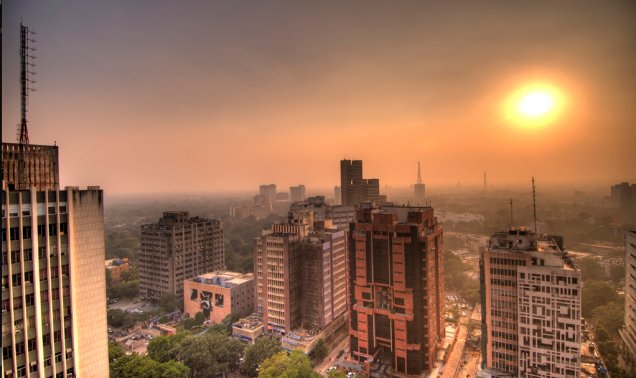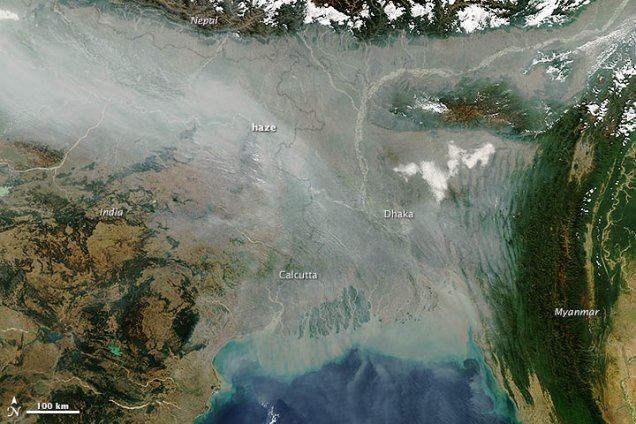
Coal giving the final finger to solar power in India? Image: Ville Miettinen, CC BY 2.0
India has taken great strides in boosting its use of renewables, but its efforts in relation to solar energy are being impacted in some parts of the country by heavy air pollution.
The country has set an admirable overall installed solar capacity target of 100 gigawatts by 2022 under the Jawaharlal Nehru National Solar Mission. Even if the ambitious goal is reached, some of massive number of solar panels installed may not generate electricity to their full potential without very regular cleaning.
A study led by Duke University professor Michael Bergin has determined dust and particulate matter (PM) may be reducing the energy yield of solar panels installed in north India by as much as 17%-25 % annually, reports The Times Of India.
Professor Bergin and his research team developed a model to calculate loss based on analysis of deposits on solar panels that accumulated over a period of a month between cleans. The modules were situated at the IIT campus in Gandhinagar, a city located approximately 23 km north of Ahmedabad and 900 km southeast of Delhi. Apparently, power generation increased an average of 50% after each cleaning.
While not a huge city by India’s standards, Gandhinagar is also home to an 870MW coal-fired power station. 2 of its units have been operating for 40 years.
What’s not clear is what proportion of the accumulated dust was wind-blown and what originated from human-activity, such as cooking stoves, vehicle use and coal-fired power generation, as this wasn’t analysed.

Haze over India and Bangladesh In 2013 – Image: NASA, MODIS on NASA’s Terra satellite, Public Domain
Regardless, the study indicates improving air quality can lead to a major improvement in solar energy yield according to Professor Bergin. It would be a pretty good deal for anything that breathes too.
While localised air pollution and haze are having a significant impact on solar production in some parts of world, there is a more widespread phenomenon known as “global dimming” or “solar dimming”, thought to have been caused by an increase in particulates in the atmosphere due to human activity that have spread over the globe.
Worldwide, the effect was estimated to have caused a 4% reduction of direct irradiance over the three decades from 1960–1990. Thankfully (1991’s Mount Pinatubo eruption aside), a small reversal in the overall trend has been observed since then.
What about in Australia – is regularly cleaning solar panels a waste of time? It depends – but if you’re keen on keeping your solar power system in tip-top shape, pick up some tips for cleaning your solar array.

 RSS - Posts
RSS - Posts



Very interesting read! I knew the pollution during Diwali was extreme at times. Had no idea that it could affect solar panels…